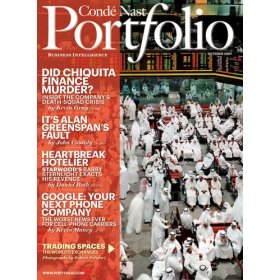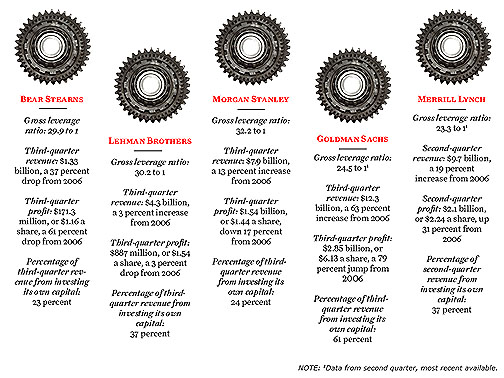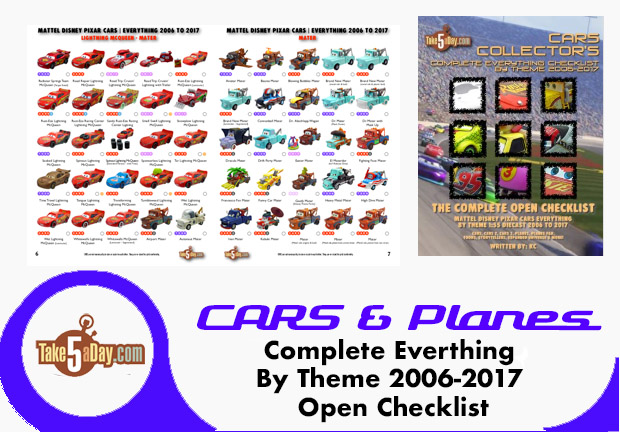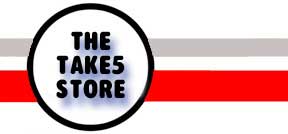Portfolio Magazine: The Business of Cluelessness

PORTFOLIO magazine is the new business magazine from Conde Nast … publishers of VOGUE, GQ and subsequently, the current owners of the NEW YORKER and even WIRED magazine.
They are the GE of publishing. We’re here to be #1 in the category, we will wear you down with professionalism, a crack sales staff and if need be – we will out-write you … or in the case of VOGUE, we will sell so many ads you will just curl up and sob loudly.
It seemed like a first rate idea when Conde Nast announced they wanted to launch a business magazine … if there’s anything that today’s world is about, it’s the business of business – from the time you are speaking as an ankle-biter, you are saying things like, “Just Do It,” and, “I’ll have a Bud.”
It used to be an orderly world. Large corporations proclaimed what they were going to do in quarterly and annual reports and held news conferences. They hired ad agencies and keep that relationship for 30-50 years … the ad agencies were full of guys in white shorts, narrow ties and expense accounts to take reporters to lunch. Unless you had millions, no broker would call you back with a quote – after all, what’s difference is $.25 change for a $33 dollar stock – you can read the stock quotes in tomorrow’s paper and wait for your quarterly statement from the brokerage house – what’s your hurry. If the “Dow” went up or down $3 a day, it was major news …
Fast forward to 2007 and really, I mean – fast forward to 2007 … if you don’t get SMS from your brokerage or website, you might miss a $3 BILLION dollar meltdown between 11:45 and 11:55 … and that’s just Countrywide Mortgage … There are swings of 30% in stock if it’s a good or bad day … and of course, billion dollar companies and 140 year-old accounting firms can fold up overnight … and relationships with ad agencies? The ad agency guys want to make ads to win the Cannes Gold Lion featuring midgets, Salvador Dali look-alike and 100 CGI Jessica Alba’s in bikini’s stroking a white cat … and of course, you sell jet turbine parts … the best ads are on YouTube where two fat guys in Decatur had a free afternoon and the neighbors video camera … at least Peter Luger’s is still around.
What William Goldman once so aptly summed about the business of Hollywood, “Nobody Knows Nothing,” now applies to EVERYTHING in business. A real life Homer Simpson runs NBC, you can artificially create diamonds better than the ones created by Earth’s own forces and 55 day traders have highjacked the crude oil contract exchange.
Man, do we need a magazine to read … except when you reach for the martini, someone has put chocolate in it.
Welcome to Portfolio magazine …
They say a successful magazine is aimed at a specific reader.
Who is Portfolio aimed at? You know the cliche in the movie where a guy sits on a wide expansive veranda and he’s wearing a big Panama hat, a linen suit, smoking a cigar and his housekeeper brings him a pitcher of mojitos and when you look out, you see indentured servants toiling in the fields of some small Central American country?
Which is fine if it was 1958 …
But 50 years later, who is this guy? This guy is now the guy who runs around with Curious George dressed as a giant banana … in other words, WTF?

Of course, that’s the problem is that the old cliches don’t ring true anymore.
FORTUNE was aimed at senior managers and directors, BUSINESSWEEK aimed at more supervisor managers and investors, and FORBES – the personality of the bosses and international news … and during the dotcom boom, they were joined by FAST COMPANY about managing and empowering people and later: INDUSTRY STANDARD, BUSINESS 2.0 and a few others who were basically the SPORTING NEWS of the dotcom boom … who are the hottest players and how they like to shine their bats … and WIRED, while not technically a business magazine – straddles the areas of technology, business & pop culture and of course, the business behind all that …
So, what’s left for Portfolio?
Of course, BW, Forbes & Fortune are aimed at a general audience now … Fast Company abandoned the empowering thing and is just another business mag rag … most of the dotcom “scorekeeping” mags have folded (B2 was just let go recently).
WIRED still rings true to its original point of writing for the Silicon Valley interested … whether you’re in Silicon Valley or not … while not as great as the first idiosyncratic 3-4 years, it’s still plenty interesting and a must-read.
The WSJ does a great job on the day-to-day stuff along with nice analyses … mainly the nice thing is their writers actually know what they are talking about no matter how arcane the industry.
And of course, there’s 24/7 news (not just ones focused on business/financial) and of course, that internet thing in general …
So, what’s left for Portfolio?
So, with CNBC, Fox Business News, the internet & the WSJ, the day-to-day is mostly covered plus anything that can be told visually or is remotely “sexy.”
So, what’s left for Portfolio?
In-depth interviews or even non-indepth interviews?
Honestly, most people now could care less about putting any business types on a pedestal of any kind after all that has happened and of course, the people who often are interviewed are exactly the OPPOSITE of who people want to hear blather about business … it’s the people who DON’T TALK that people want to read about … or in today’s world, no one wants undue publicity for themselves or their company – trade secrets, professional jealously or why confirm your game plan or even why show off YOUR rising stars so some other company can snatch them away?
In-depth analysis?
If the in-depth analysis is too good, isn’t that just giving the book idea away? Or in the case of business world now, maybe an entire COTTAGE CONSULTING gig?
Or if if you know that industry so well, why aren’t you working as a consultant and can make a lot more?
The problem with the business of business writing is exactly like NCAA Basketball Division 1 … how many juniors and seniors are still in college playing hoops that are great players? Some but it’s all just a stepping stone …
And that’s what’s wrong with Portfolio.
It’s a random collection of red-shirt freshman, sophomores with an eye on moving on, juniors with a chip on their shoulder (or some surgery scar) and what else?
Portfolio is best described as random.
It’s bits and pieces of Conde Nast.
Let’s borrow the typeface from the NEW YORKER (well, not exactly a lift but in some bizarre tribute, Portfolio decided on a typeface to evoke Art Deco New York … uh, isn’t Art Deco New York like 1932? While a 70 year old typeface might seem appropriate for an arching literary magazine like the NEW YORKER, it doesn’t quite work for a business magazine).
… and borrow some random charts design elements from DETAILS (which is really a lifting of the non Conde Nast magazines design of NEW YORK magazine … already paying tribute to SPY magazine … so how many magazines is that removed?)
… and if the length of a feature in the NEW YORKER indicates intellectualism … then by golly, we can do that same thing from our brethren publication … sometimes for no reason … don’t think we can write 40,000 words on cardboard, we’ll show you!
… of course, we need the hipness quotient from our West Coast brethren, WIRED … who manages to pull in print the look & feel of the short attention span & disheveled feel of a half-shaven dot-comer with wild in the sky ideas … like a real dot-comer, some ideas that only naiveté conviction could make it work like FACEBOOK, some half-baked idea that ultimately is cool like SKYPE and the plain weird that actually is almost something like TWITTER but then WIRED, in the hands of PORTFOLIO comes off like Microsoft’s “social network.” Too much copying, not any heart. Too much robot, not enough cyborg.
… and the worst feature of most all of Conde Nast’s books, let’s annoy our readers by splitting every freakin’ article in half … are they telling us the last half is not worth reading? Because in 90% of the cases, THAT IS EXACTLY WHAT I DO … I stop reading it. I am not going to look for the second half of 40,000 words on cardboard. You got me hooked in the beginning but then you lost me … let me ask the editors this … when a writer sends an email with their feature and you print it to read, do you only print 50% of the pages, read it – then go have lunch, knit your cat an afghan and then read the rest of the pages and write GREAT on it? (this is what I imagine happens at Conde Nast 🙂 OR so you read it all in one sitting? Then why do you treat your readers with less respect?
HOW TO FIX PORTFOLIO
Now, the writing itself is to Conde Nast standards – professional and top notch … the problem is its randomness.
Who is your audience?
Not the dude in a Panama hat smoking a cigar.
It’s a manager who’s looking for insight and information to slap down in front of their boss (or forward in an email or meekly sneak it on their table) to say, see, they is doing this … we should too! Or to get a glimpse at managers/employees at some other business handle the business of business …
Plus, we have NO TIME. We already have 40 calls to make, 262 emails to answer, 5 conference calls and 3 meetings no one is sure who called the meetings.
How about a business magazine that is useful and saves us from reading more than necessary!
If you’re going to a chart, one is useful … like this one … insightful and interesting about how YOU CAN literally sell TAP WATER to people with a TAP …

But then this is totally not, it’s NOT EVEN lined up correctly – don’t get cute for the sake of being cute.

This chart would be more interesting and MORE INSIGHTFUL if it was about donuts within a 5-block radius of the Conde Nast building.
Right now, it tells ME NOTHING.
What should I gleam from this chart that is useful to me as a business person or as a manager?
These Wall Street companies didn’t understand the implications of the bundling of securities and financial instruments?
D’UH.
We all know that.
Why did the designer spend 11 hours making 10 versions of this chart (rejected ones include ones that are lined up, one where there is a red separating line, one where there is a separating line that goes down halfway, one where the lines are green, and a grid version).
ALL telling me exactly … NOTHING.
What PORTFOLIO needs to be a RSS for the busy executive … summarized and a quick read.
What is the behind the scenes maneuvers with the BAE & Oracle thing? Oracle has bought a bunch of companies – all fit into the Oracle culture? Is Carl Icahn of 2007 the same dude as the Carl Icahn of 1997 and of 1987?
SUMMARIZE.
If I’m not interested, I’m not going to be more interested 20,000 words later but give me a quick over-view to decide.
And make features useful for all the aspects of the business world – what’s the takeaway for marketers? For financial? For HR?
Or there are about 100 business books published every month – how cutting to the chase and tell me if what kind of people should read this book? Marketers at small companies? CEO’s at Fortune 1000 companies?
BOTTOM LINE
I’m busy. Think of me as your CEO. Do you go into a senior meeting with a 45-minute PowerPoint presentation? Do I want your life story?
And this applies to any other business magazine.
Make me smarter. Make me smarter in my job. Make me smarter in my company.
And you have 10 minutes.
GO!





